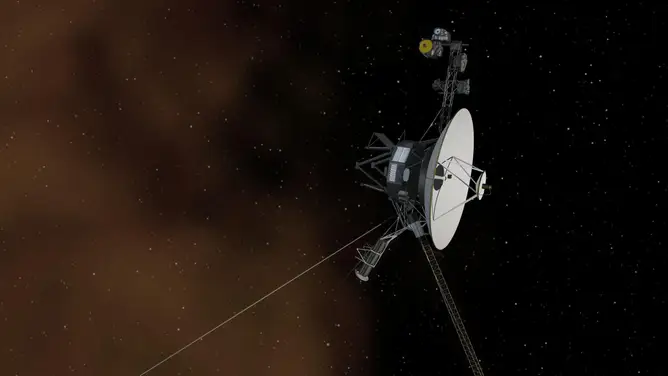According to Statement from NASA, for the first time since November 2023, NASA’s Voyager 1 spacecraft has started transmitting useful data back to Earth about the status and functionality of its onboard systems.
Fixing the Computer Glitch
Voyager 1, currently the most distant human-made object in existence had stopped transmitting meaningful science and engineering data on November 14, 2023. Even though the spacecraft literally was receiving instructions and operating as expected, the data it sent back was unreadable.
The problem was diagnosed as malfunction in the flight data subsystem (FDS), one of the spacecraft’s three onboard computers. This system is responsible for organizing the engineering data before it is sent to Earth. This problem was identified by the engineering team at NASA’s Jet Propulsion Laboratory (JPL) in Southern California.
This subsystem is important in packaging this engineering data before all the data goes back to Earth. The chip responsible for storing part of the subsystem’s memory had stopped working, which made all of the data unusable and the code was too large for one location.
“A radio signal takes about 22 and a half hours to reach Voyager 1, which is over 15 billion miles (24 billion kilometers) from Earth, and another 22 and a half hours for a signal to come back to Earth,” NASA said in its statement. “When the mission flight team heard back from the spacecraft on April 20, they saw that the modification worked: For the first time in five months, they have been able to check the health and status of the spacecraft.”
The Voyager Missions
The NASA Voyager mission consists of two spacecraft, Voyager 1 and Voyager 2, which were launched in 1977 to explore the outer solar system and beyond. The primary goal of the mission was to take advantage of a rare planetary alignment that allowed for a grand tour of the outer planets – Jupiter, Saturn, Uranus, and Neptune.
Voyager 1′s twin spacecraft, Voyager 2, continues to operate normally, NASA said in a statement. It is the only other spacecraft other than Voyager 1 to fly into interstellar space.
Both were launched in 1977 with Voyager 2 being the first spacecraft to fly past Uranus and the only one to visit both Uranus and Neptune. It flew past Uranus in January 1986, and Neptune in August 1989. Each flyby yielded important discoveries.
Continuing Communication in Interstellar Space
Voyager 1 entered interstellar space in August 2012, making it the first human-made object to do so followed by Voyager 2 followed into interstellar space in November 2018. The Voyagers still continue to communicate with NASA Deep Space Network to send back scientific data.
Aboard both probes are phonograph records called The Golden Records that each carry time capsules “intended to communicate a story of our world to extraterrestrials,” according to NASA. The records contained sounds and images selected to portray the diversity of life and culture on Earth if happened upon by an encounter with an intelligent extraterrestrial.









